The Netherlands is a country in northwestern Europe that is known for being flat, full of canals, tulip fields, clogs, windmills and bicycles.

On the last point, there are three times as many bicycles as there are cars in the Netherlands. In fact the laws have been written to favour the bicycle over all else, including the pedestrian.
BEGIN RANT – This is where the nation has gone completely wrong in my point of view. It is not safe to walk anywhere in Amsterdam as the cyclists have full reign over the road. This has now extended beyond the bicycle and includes the e-bikes that can reach some seriously high speeds.
The protected status afforded to cyclists has made them the most arrogant and entitled people that I have ever come across, with zero regard for anybody else. I would even go as far as to say that they are terrorists. It is impossible to walk, drive or otherwise commute in Amsterdam for fear of being collected by one of these whispering assassins.
I am ok with the congestion thing and accept the health benefits of cycling but the pendulum has swung way too far here and some sanity must be brought back into the equation. END RANT
Because the Netherlands has no mountain ranges or natural borders, it has been unable to protect itself throughout most of history. The Romans, Celts, Germans, Scandinavian Vikings, Franks, Austrians, Spanish and even the French had ruled parts of the Netherlands for centuries.
Since the 17th century major Dutch cities like Amsterdam and Rotterdam have become major international trading hubs and fuelling a major maritime empire.
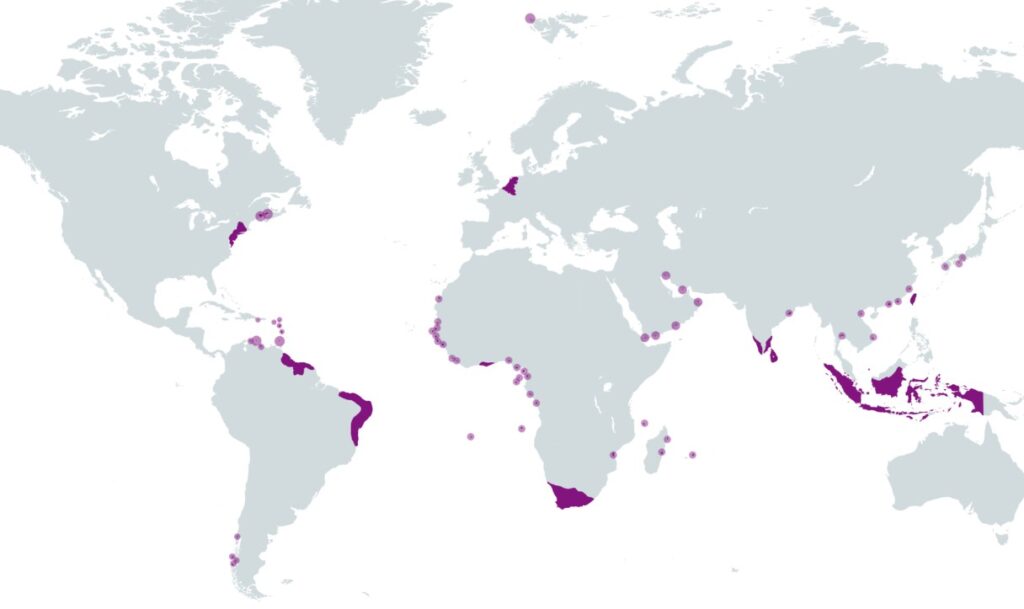
Dutch territories over the years have included: Indonesia (1602-1945), Sri Lanka (17th century-1802), the Netherlands Antilles (since 1634), Tobago (1654-1678), Suriname (17th century-1975), Guyana (1667-1815), Belgium (1815-1830), Luxembourg (1815-1867), South Africa (1652-1805), parts of Malaysia (1610-1830), and a part of eastern Brazil (1630-1654). As well as trade posts all over the world. To this day the islands of Aruba, Curacao and Sint Maarten, in the Caribbean, remain dutch territories.
About one-third of the Netherlands lies below sea level, with the lowest point being almost 7 meters below sea level. Because of this they have one of the most sophisticated anti-flood systems anywhere in the world. An extensive system of dikes, pumps and sand dunes keeps the Netherlands above water.
Over the years I have had a lot to do with the Dutch either personally or through work and have found that the Dutch and Australian senses of humour are fairly well aligned.
Tulips are a major industry, and the Dutch produce billions of bulbs each year. And wooden windmills have been helping to drain water from the land for over 600 years.

Rotterdam
Rotterdam has the distinction of being the largest port in Europe. Between 1962 and 2004, it was the world’s busiest port (by cargo tonnage) until it was overtaken by Singapore. Since then Shanghai and other Chinese seaports have kicked it back to number eleven.
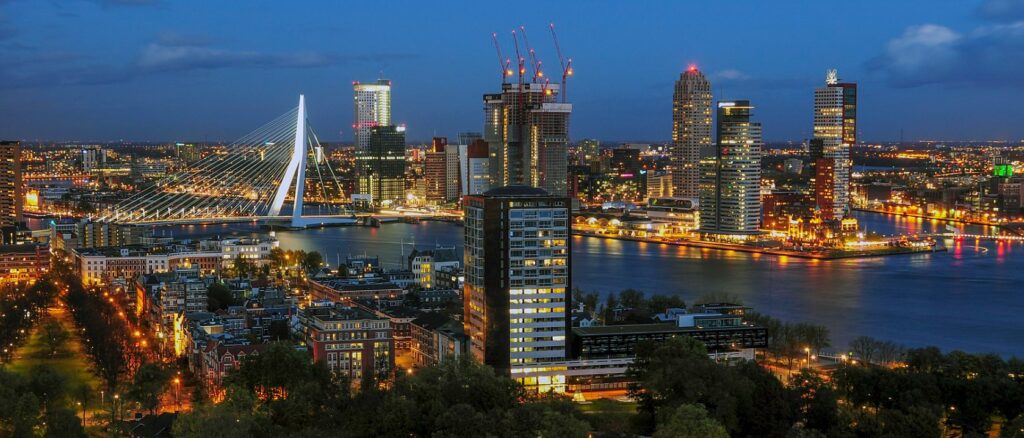
It is the second largest Dutch city with more than 600,000 residents and has been a town since the mid-13th century.
The Hague
The Hague is best known as the home of the International Court of Justice and the International Criminal Court. For over a century, it has been the place where countries gathered in peace conferences and international courts to foster peace through justice, rather than through war and conflict.
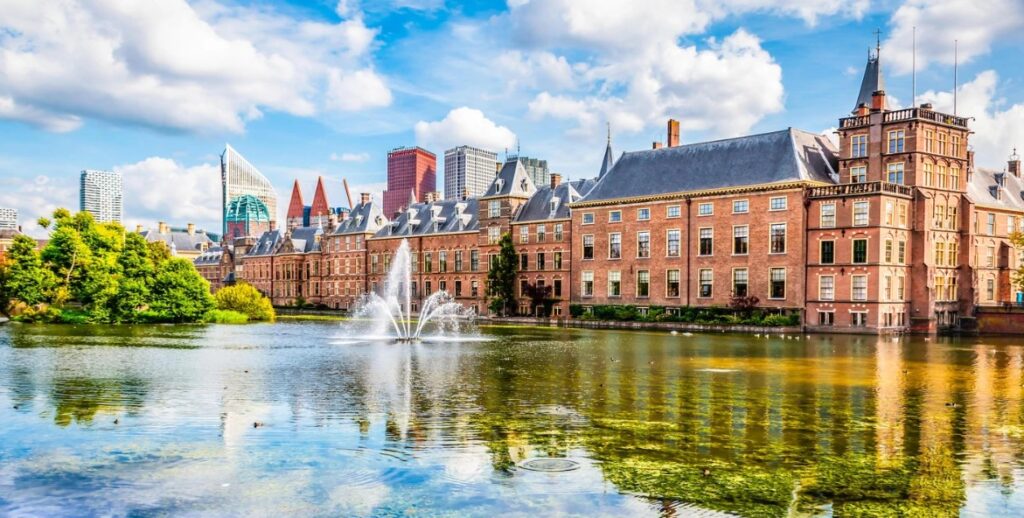
Utrecht
Utrecht is the fourth-largest city in the Netherlands (about 360,000 people). However, it has the largest university in the country and has been incredibly important throughout the nation’s history, especially in the religious sense – it is known as the Netherlands’ center of Christianity.
Alkmaar
Alkmaar is a beautiful old city of around 100,000 people, about 60km (or 30 minutes on the train) outside Amsterdam (north). The city has many canals and monuments and is known as the cheese city of the Netherlands.
And the people are called cheese heads.
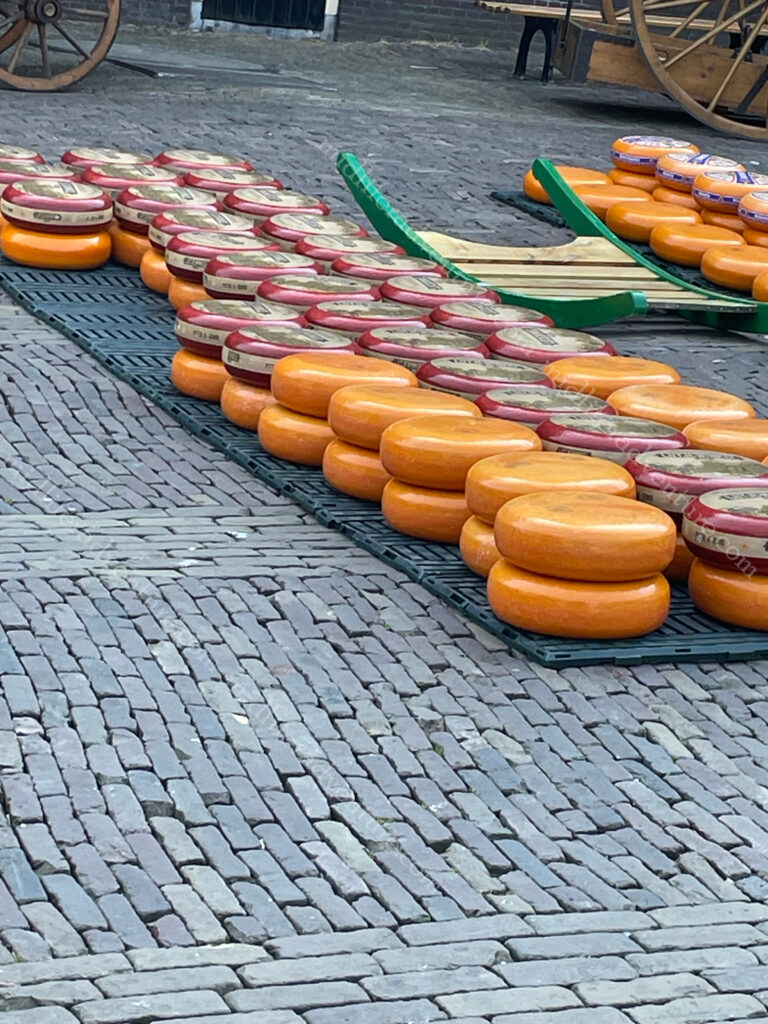
Alkmaar has many medieval buildings that are still intact, most notably the windmill and the tall tower of the Grote (or Sint Laurenskerk) which has become a popular wedding venue. There is the beautiful old centre with plenty of monuments, nice shopping areas, cozy terraces, cafes and restaurants covering all price ranges.









For us though, it was the home of Michel and Sonja, a Dutch couple that we met and shared our Boodle Fight with back in the Philippines, so many months earlier.
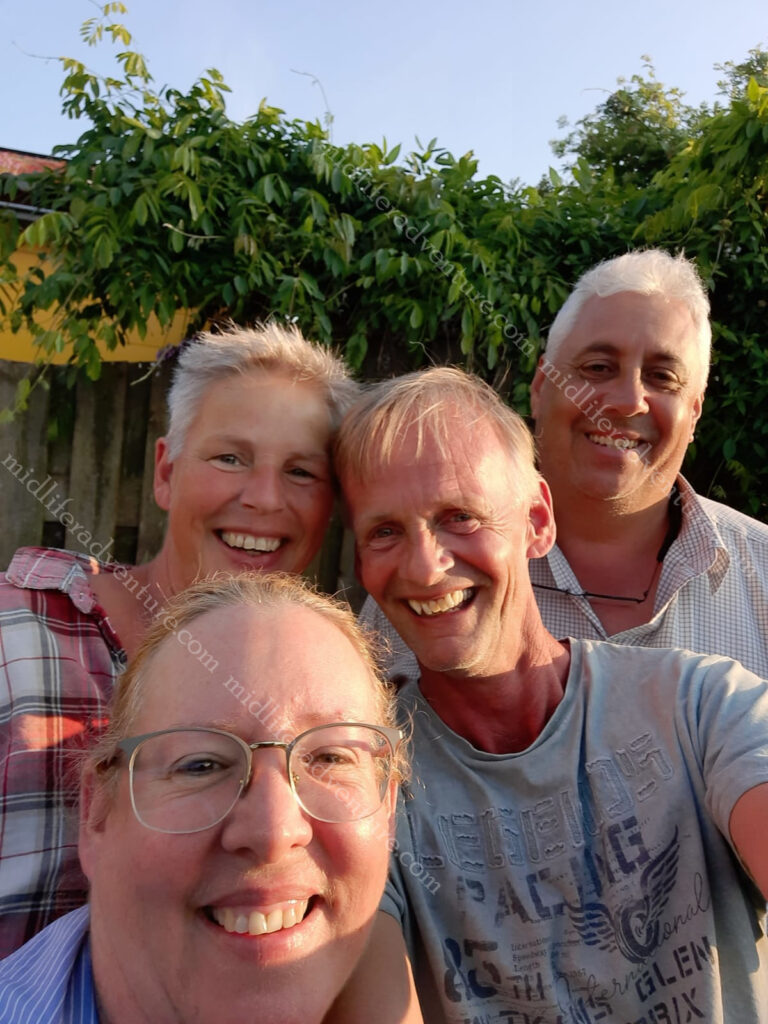
Knowing we were coming to Amsterdam we organised to catch up with them, which we did in Amsterdam on our first day. During a wander and a chat they mentioned that on the weekend, their home town (Alkmaar) would host the Kaeskoppenstad (this will require a fairly detailed explanation – but more to follow).
So we hopped a train and headed to Alkmaar. Now Sonja was stuck at work (in the local Ice Cream shop) and worked until 6 pm. But Michel, Jill and I wandered the town and saw the sights until we found ourselves in the heart of town at an ice cream shop, by the canal, with a line 20 deep and out the door. So we waved at Sonja and sat by the canal drinking coffee and eating ice cream, having met the owner and her husband. The fun bit about this was the bell in the canal that allowed boats to have service without having to get out and join the queue.




OK so about Kaeskoppenstad – During the 1500s the Spanish controlled the area and the Dutch locals resisted. This resulted in the 80 years war between the Spanish Empire and some random groups within the Habsburg, Netherlands. The siege of Alkmaar (1573) was a critical turning point in the war as Alkmaar was the first city to withstand a siege by the Spanish army. This gave rise to the expression Bij Alkmaar begint de victorie (“Victory begins at Alkmaar”). The burghers of Alkmaar held off the Spanish, for six weeks, with boiling tar and burning branches from their city walls.
To celebrate this every year the Kaeskoppenstad takes place. The official blurb says it “takes you on an unforgettable journey into the history of the city of Alkmaar. During the weekend the people dress up and reflect on what life would have been like back in sixteenth century shortly after the liberation of Alkmaar in 1573”. During the event, hundreds of volunteers and actors dress up and show what life in the city was like 450 years ago. And we were here at the right time.






The place was buzzing, there were people everywhere and the atmosphere was fantastic. While it was a huge festival, it had not turned into a big commercial rip-off. There were a few places selling some basics, but for the most part it was about the dress up and the celebration.
Back to the ice cream. As we had our ice cream the owner’s husband (Fons) had a little boat that he was using to restock their tiny ice cream stall inside the festival. He had hand-built a well (that housed a chest freezer) and they were selling ice creams out of this. So Fons spent his day doing laps of the canals in his little boat, topping up the stall of things that they ran out of (ice cream, napkins etc).



As they were locals, they did not think that they (and we by extension) should have to pay the 4 euro admission to the festival. So we hopped on Fons’ boat and did a restock lap and then got ferried in and dropped off at the well, inside the gates.









The bridges over the canals in Alkmaar are short, some of them very short, in fact only a few feet above the waterline. So as we did our lap, Jill and Michel were forced to duck down and at times almost laying flat to get under the bridges. While at the same time, I ended up sitting on the floor of the boat.





From here we wandered and explored all of the silliness that took place. This included lepers, apothecaries, magicians, laundry, medieval toilets, a wooden submarine, health care, a casino. And what turned out to be our favourite was the human slot machine. This is 3 people side by side with a basket of fruit on their lap and at the appropriate time, they all pull out a random piece of fruit. If they match, you win a prize (a piece of cheese).









After we had done our lap we headed back to Michel and Sonja’s place for a beer and a chat, while Sonja kept slaving away with an ice cream line that never seemed to get smaller. About half an hour after the festival finished, Michael called Fons to see if he needed a hand in dismantling the well (which he did). So we wandered back and spent the next 30 mins or so pulling down and packing away the well.



Sonja finished work as we were finishing this, so back to their place for dinner and more chatting. All had gone swimmingly and a great day was had by all (even Sonja who had worked all day – I guess loving your job makes it easy). However comment was passed as to the bell by the canal. Apparently after a long day working in a busy place, the sound of the bell wore a little thin and mildly annoyed some people.
Sonja dropped us at the train station for our ride back to Amsterdam. Unfortunately, this is where the wheels fell off.




Due to a fault at Amsterdam Central, no trains could enter. So we were stopped about 16km outside of Amsterdam while we waited. When our train started, it was heading in the wrong direction (no announcements in English). So we got off at the next station, got a train back to where we had just left, and walked to a bus stop (to find 3 train loads of people all trying to get a bus to Central). No extra buses were put on, and train tickets were not valid on the bus.
After the crush of missing the first bus, we got on the next bus that we could taking us in the general direction of Amsterdam. From here we found a different train that took us nearer to our hotel and walked back from as close as we could reasonably muster. We finally got home around midnight, with a story to tell.
Alkmaar part II
For those that remember back (a bit over a year) we have already visited Alkmaar (about an hour north of Amsterdam) to catch up with friends that we had met in the Philippines (Michel and Sonja). The first time we arrived we happened to luck out and be there on the weekend that they hold their annual Kaeskoppenstad. This was to commemorate the siege of Alkmaar (1573), a critical turning point in the war against the Spanish as Alkmaar was the first city to withstand a siege by the Spanish army.

So on hearing of our impending return (we would take a cruise ship out of Amsterdam) we were told to forget about Amsterdam and stay with Michel and Sonja in Alkmaar instead. As it turned out, Michel (being very busy and important) had to work in the US and it was just us and Sonja.
While we were not here for the medieval festival, when we did arrive the entire town was awash with people yet again. As it turns out, when they know that we are coming, the entire town turns out. In reality, each Friday from March to September, the central square area (Waagplein) comes alive with a re-enactment of early cheese traders. Alkmaar is renowned for its cheese (cheese trading started in 1365) and they are lovingly referred to as cheese-heads.










Cheese carriers, outfitted in traditional white garb, and colorful straw hats, transport the cheeses on wooden sleds (called “berries”) which hold as much as eight cheese wheels, weighing 16 kilos each. Buyers and sellers negotiate the price of cheese through a series of hand slapping gestures. Cheese is brought to the weighing house, where it’s weighed, then brought to wagons for further transport.





Sonja posed for us at the bronze statue of a Dutch kissing cheesegirl.
It is a gift from one of the local Kaasmakers, renowned for making Beemster cheese.
A local ‘cheesegirl’ Denise van Dort modelled for the statue and gave her her first kiss on the reveal in July 2016.
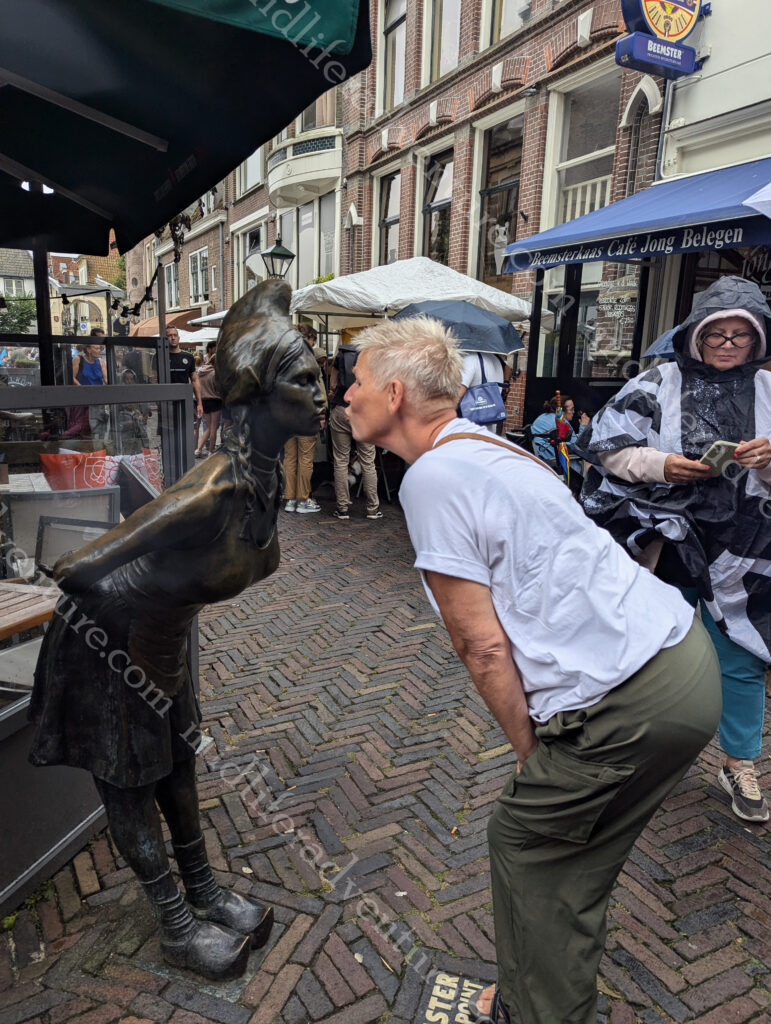
Having wandered about the cheese thing, we paused at the local ice cream shop for a coffee and some apple pie for Jill. Sitting on a bridge over the canal while generally just watching the day go by really is a pretty good way to spend your time.





Sonja had organised some of her friends to take us on a boat ride around the Canals of Alkmaar. We were very quickly reunited with the concept of ducking to get underneath the low bridges on the canals. For those that have been following along, the first time here we did the inner city loop (restocking icecream at the fair), this time we did the wider loop taking in the Alkmaar surrounds. Our first stop was at a friend of theirs place who owned a restaurant and beerhaus with an incredibly impressive range of beverages on offer.










From here it was off again, after some minor engine trouble we found ourselves floating past windmills to truly cap off the Dutch experience. A bit further along we ended up at an oddly placed beach bar on the side of the canal. Feet in sand, we had a quiet sip for a few hours before continuing our journey, racing the setting sun to get home in time.









Putting the boat to bed we all headed to the local pizza joint for a bite to eat and good company. The pizza place had yet another impressive range of beers and the glasses that went with them (a really nice touch prevalent in this part of the world). Five of us ate and drank and the total bill came out at just 5 euros more than we had paid 2 days earlier for just Jill and I to eat in Norway.






The next day Sonja had to work so we took the opportunity to get all of our domestics (washing etc) under control . Once this was sorted we hit the shops and cooked up a storm so that Sonja could just relax when she came home to a fully cooked meal (including dessert).
After this we walked (about 500m) to Sonja’s sister’s house and met some family members, along with her daughter. On the Sunday we made our way (about 5km) from Alkmaar to the little village (715 residents) of Grootschermer, the town where Sonja grew up. Here we met her mum, sister, daughter and brother-in law (from the night before) and their son who also came out to visit.
On a Sunday the town of Grootschermer comes out and gets together focussed specifically around the tiny house (an old farm house). Around this area was a few people in dress up (must be a dutch thing) and some displays of making wool with an old spinning wheel.







Most importantly, they were smoking fresh eel and serving it up on bread rolls (Palingbroodjes), and on the other side they were frying up fresh dutch croquettes and serving them on bread rolls with mustard (Broodje kroket).




The hall church was thoroughly restored in 1978. The tower clock and bell are from 1648 and the old coat of arms of the Schermer (a mole and two pikes) are still in the clock. The eastern dial of the clock is larger than that on the west side because the farm workers had to be able to see the time from far away. The village church has an art committee that organises exhibitions every summer. During the exhibitions, the church is open on weekends and is freely accessible.



From here it was off to the Foundation Museum and Sculpture Garden of local artist Nic Jonk. This museum and its sculpture garden were opened in 1965. You can look at statues, paintings, glass art and much more. There are around 200 statues by Nic Jonk in public spaces around the Netherlands. His work can also be found in Belgium, Germany, Italy, Curacao and the United States.





Alkmaar and the surrounds really gave us an insight into life in a small village. Sonja was born, grew up and has lived her life within a 5km radius, and (much of) the rest of her family is within the same area. They have all travelled widely and experienced other things, but have chosen to stay rooted to a particular spot. And what a lovely spot it is.
This level of community and village type feel does not exist in big cities and even in small towns in Australia, I have not seen or experienced anything like it.
It was a shame that we missed Michel, but Sonja was an amazing host and we had a really good time and are so grateful for the hospitality offered. I am certain that we will catch up again, in Australia, Netherlands or maybe even back in the Philippines
Amsterdam
We arrived in Amsterdam (the first time) having left the Czech Republic, but were going to come back another few times more, so I held off doing this post to capture all of the bits that we ended up seeing. So when reading along the timeline will be a bit off in sections.
Depending upon your interests there is so much to see and do in Amsterdam, but we warned it is a very expensive city for virtually everything. The tourist sight map below has over 40 museums available to be seen within this small area of the central district. Add to that a further 25 places of interest and another dozen or so tour and canal boat launching sites.
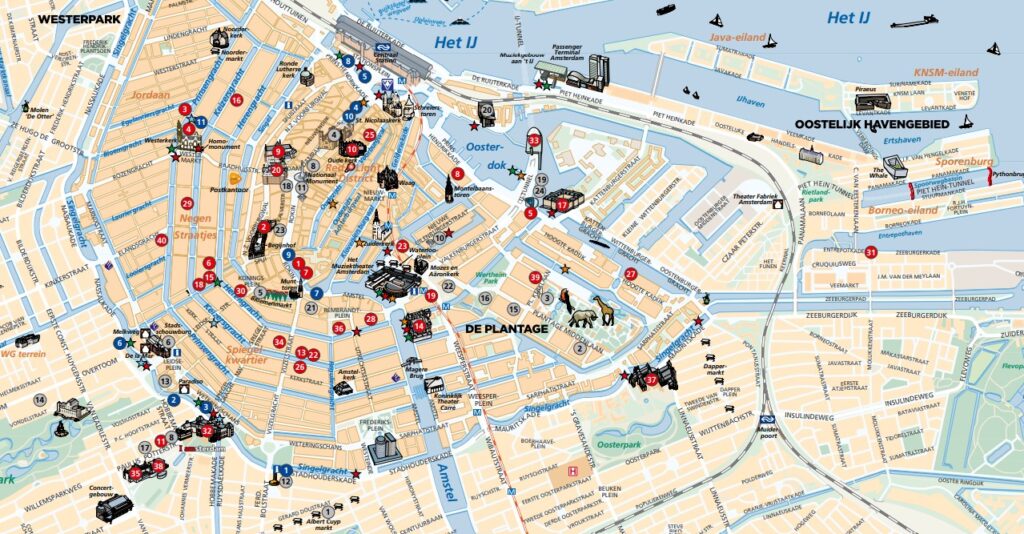
The reality of Amsterdam is that virtually everything is old (400+ years old). And because of this, everything that you look at is old and impressive looking. The first time around we ended up staying at a little (400 yr old) hotel in Rembrandtplein (Rembrandt Square). It was in the centre of everything, surrounded by historical sights and restaurants, and was (almost) ideal.




I say almost because on Friday and Saturday evenings it gets taken over by “English Lager Louts” on football and bucks party weekends. All looking to get drunk and stoned and hit one or more of the live sex shows that are on offer in Amsterdam.



A quick wander up the road from our hotel and we were in the flower market area, along one of the famous Amsterdam canals. Needless to say there were tulips aplenty and bulbs galore.



We were met by Sonja and Michel (from Alkmaar) and were able to have a lovely late afternoon wander around the city, past the canals, looking at various sights. Not being from Amsterdam, I kept pointing at things and asking what they were, to which Michel replied, no idea. This is where we learnt about the festival in Alkmaar and totally messed up this timeline.





The Amsterdam buildings were the most amazing thing for us. Nothing is straight or square. The houses were built (hundreds of years ago on wooden piles that were driven into the ground. Over time these have either rotted or sunk causing the entire foundation of the city to move. Add to this that many of the houses have been given additional floors, which put extra pressure on their foundations. This added weight may have pushed formerly upright buildings slightly forward, creating a slanted facade. As you walk down the street the houses are, almost without exception, at weird angles.



With the timeline messed up, I will go through things alphabetically now. We did the obligatory trip past the Anne Frank House, but this is super popular, and super small so only a trickle of people can go through at a time. When you arrive you are met with about 300 people milling about in front of the building waiting to be called in for their turn. The Anne Frank House itself serves as a museum and awareness centre for those persecuted during the Second World War.




The Begijnhof lies within the Singel — the innermost canal of Amsterdam’s circular canal system. It is an inner court which was founded during the middle ages and lies a meter below the rest of the old city center.
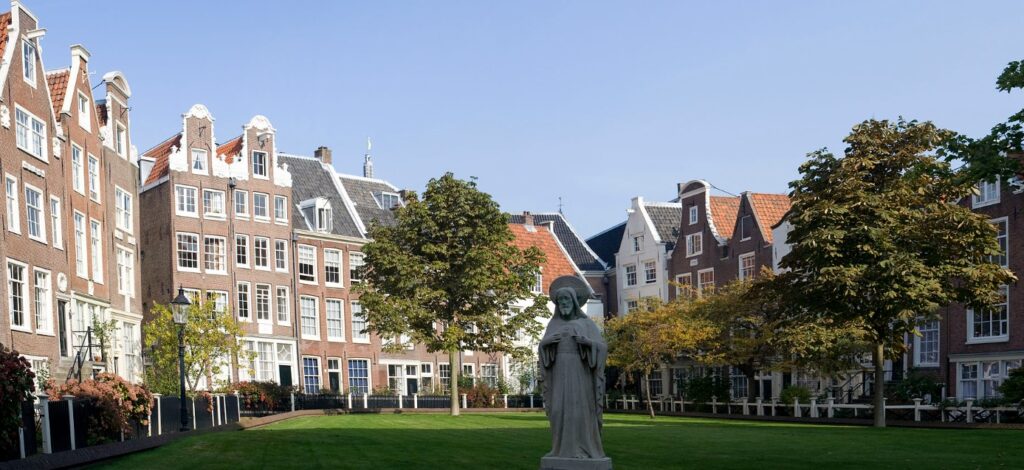
Central Station is a seriously impressive building to look at in the heart of Amsterdam. Sadly it does not function anywhere near as impressively as it looks. We made many trips in and out of here over the period and, for the most part, it was highly complex and inefficient. But, it does look very pretty.



Dam Square lies in the heart of Amsterdam at the original location of the dam in the river Amstel to prevent the Zuiderzee sea from flooding the city. It was created in the 13th century and has been the centre of activity since those times. It is dominated by the jewel in the crown the Royal Palace (Koninklijk Palace). Opposite the palace is an obelisk that was built in memory of Dutch soldiers and members of the resistance who died in World War 2.



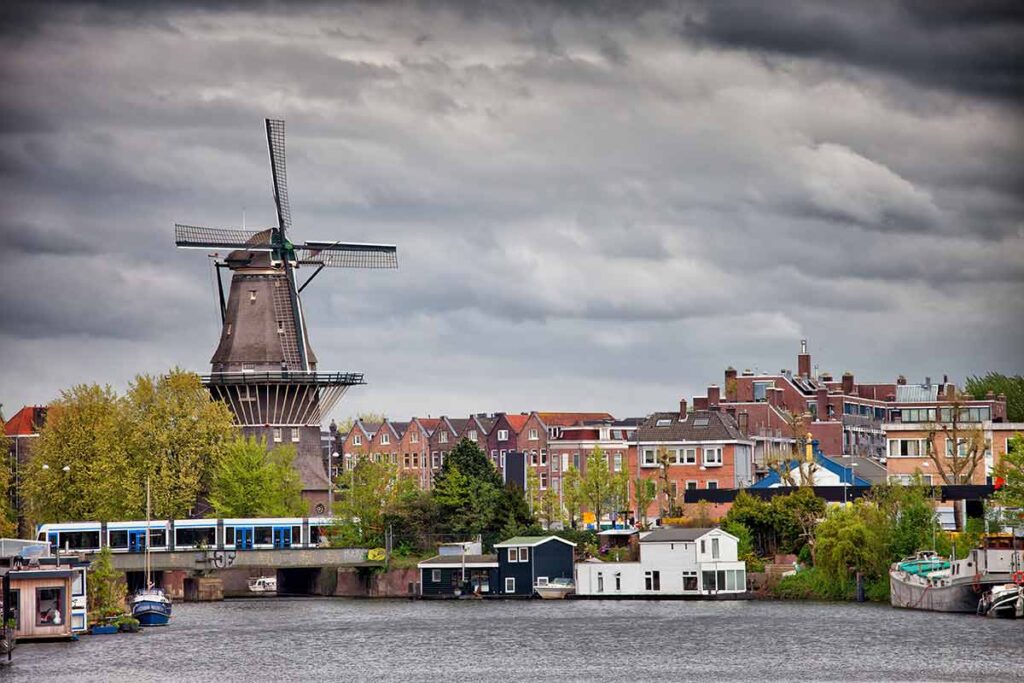
The De Gooyer windmill, is one of the most famous windmills in the Netherlands. It is octagonal in shape and dates back to the 16th century.
The Heineken Experience is a tour of Heineken’s oldest brewery, in the heart of Amsterdam. You can learn all about the brewing process, innovations, and even learn about the best way to taste and enjoy beer.
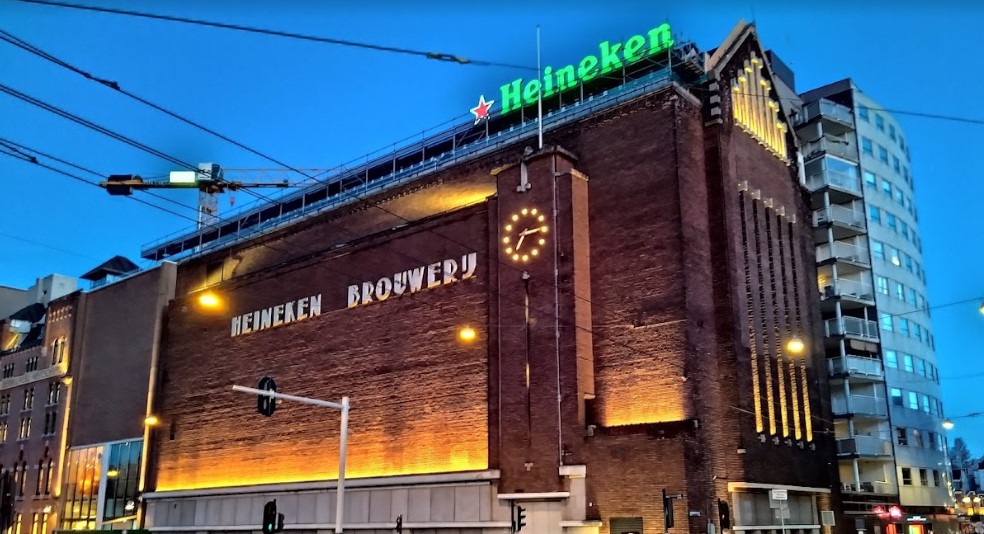
Interestingly, most Dutch people don’t drink the stuff, preferring some of the more interesting beers on offer. I must say that I agree with them.

Hortus Botanicus is a 375 year old tribute to all things botanical. More than just a pretty series of gardens the Hortus library has botanical descriptions from explorations going back to the 16th century.
Museum Our Lord in the Attic was built in 1663, when Catholics lost their right to worship.
So a Catholic church, known as Ons’ Lieve Heer op Solder (Our Dear Lord in the Attic) came into being in the attic of a large building. This has subsequently become a museum.

The Rijksmuseum is the national museum of the Netherlands. It tells the story of 800+ years of Dutch history, from 1200 to now.
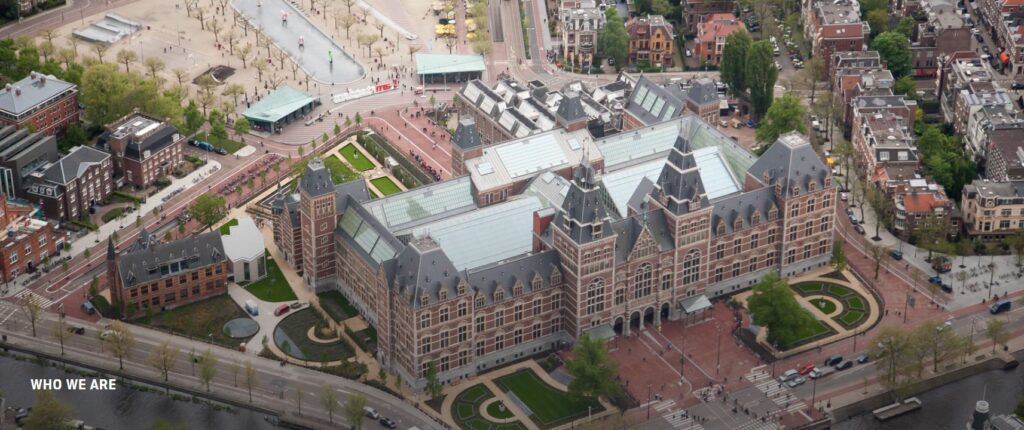
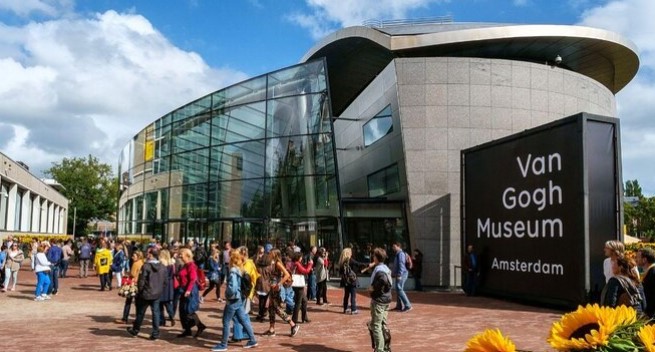
Amsterdam’s Van Gogh Museum has 200 paintings, 500 sketches and 750 documents and letters from Vincent Van Gogh. Within the museum are some of Van Gogh’s most famous paintings, including Sunflowers and The Bedroom.
Vondelpark is Amsterdam’s largest urban park and includes a famous open-air theatre, numerous children’s playgrounds and several cafés and restaurants.
And of course it is Amsterdam, so there are canals everywhere you look there is something very special and soothing about a city that is built around waterways. The canals were almost calming enough to make you forget that at any moment you could be run down by a cyclist with scant disregard for anyone else.







As a totally random coincidence, our brother-in-law (Jason) happened to be in town on business.
So we headed to his hotel and caught up for a coffee and a good chat before we headed off to Alkmaar.
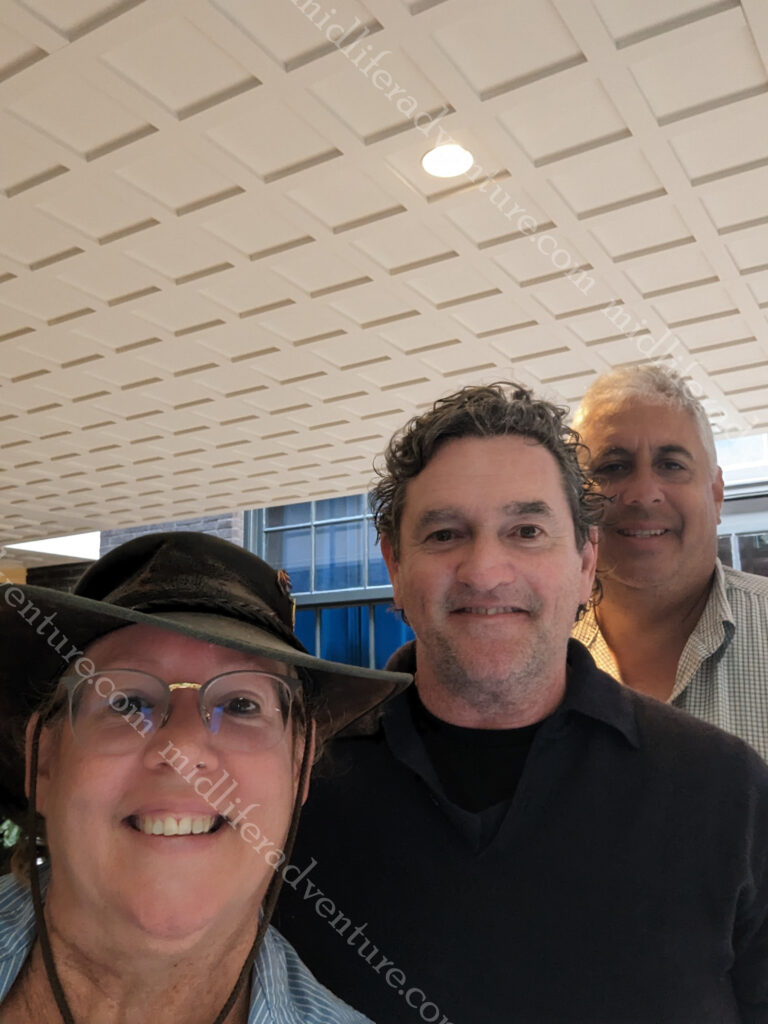
Our second Foray into Amsterdam was after the Germany trip and at least on this occasion the train system and central railway station did not fail us. We had flight out the next day (to Canada for Claudia’s birthday cruise of Alaska – see what I mean about the timeline) so we decided to stay at one of the commuter hotels out near the airport.
What a delight this was, the train from central to the airport was simple, from here a free shuttle bus direct to the door, a nice tidy clean room with good internet and a warm shower and a bunch of reasonably priced dinner options.

A free breakfast the next day (starting at 4am for those on red-eye flights) and the same free shuttle back to the terminal. A very efficient and welcome transit.
A couple of weeks later, we were back from Canada and Alaska and in Amsterdam for a quick transit. This time we were taking the train out of town so we arrived at the airport and attempted to get the train to central. But alas for the second time in three trips central station was all messed up. We bought our ticket ($20 worth) and headed down to the train station. Once down there, we saw the sign on the board saying that due to a switching problem, all trains to central were cancelled.
So we headed back up the escalator, having kissed our fares away, and then (once again) made our way towards a bus (which we also had to pay for) and began the slow trudge to town. Once over the train debacle, the rest went pretty much according to plan.
We checked into our hotel which was on the third floor (and upwards) of an old building. Given that it was an old building, they were not allowed (by law) to change anything. This meant that there was no lift and that the staircase to reception was two flights high. The individual steps were half the width of a normal person’s foot, and they then turned a corner (making them about the width of my foot). And of course, once checked in, we were up another level again. And there was us, trying to lug two, 23kg bags plus day bags up these impossible stairs (after our 25ish-hour transit from Vancouver).



Anyway, we made it up, and back down the next day without too much incident (but with a healthy amount of huffing and puffing). We got a nap in had a nice meal and the world was all good again. The up side of all of this was that the continental breakfast the next morning was magnificent. After a couple of weeks of North American breakfasts, the continental offerings were a welcome sight and the coffee actually tasted nice.
Dutch Beers
On the whole, dutch beers are magnificent. They have not gone silly with the whole microbrewery and IPA thing and have stayed true to their roots. The lager, draught and Pilsner offerings are almost universally fantastic. The coolest thing that they do however, is match their glass shape to the particular beer. This means that each beer comes in a unique glass. Lets not be silly here, it is highly impractical for storage and washing, but a fantastic touch nonetheless.






Dutch food on the other hand is not as awesome. It is rich and hearty and filling enough, but does lack some of the variety and interest that other countries’ cuisines offer. There is a huge focus on sausages and stews accompanied with stodgy (but nice) mashed potatoes. Having said that, a regular beer snack (bitterballen) is one of the best things that we have ever eaten.







Overview
The Netherlands is a tough one to rate, bits of it are magnificent while other bits are a broken mess or are brutally expensive. There is certainly a lot of history and the architecture is interesting to say the least. There are museums and art galleries everywhere you look, just as there are knock shops and weed joints. The beer is (for the most part) pretty good, but a beer will sting you a lot of money to buy.
The people are friendly and welcoming, but the cyclists are terrorists wreaking havoc everywhere they go. I would certainly want to come back here but once again the logistics and ease of travel through the Netherlands means that it can be done simply and later on in life without needing much energy .